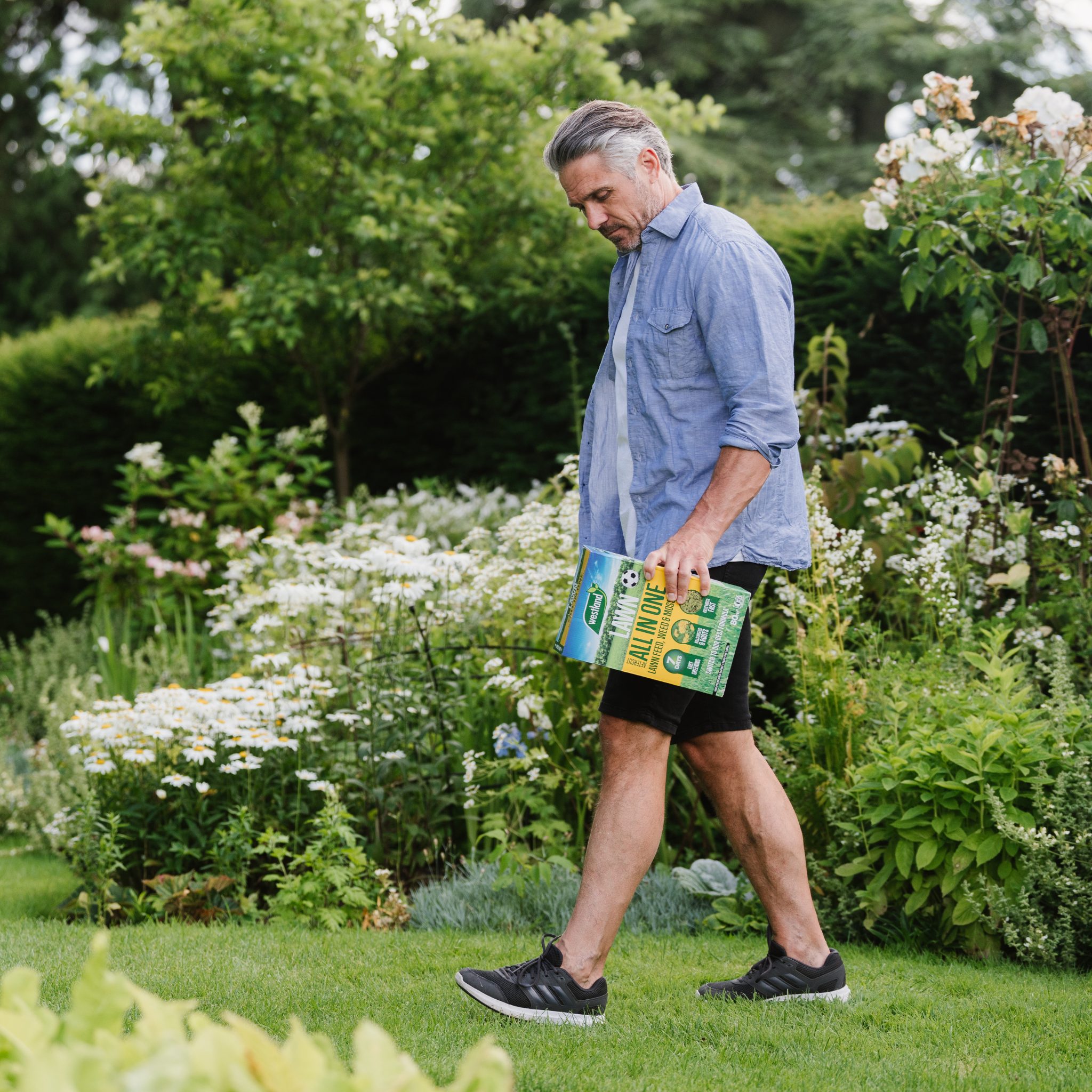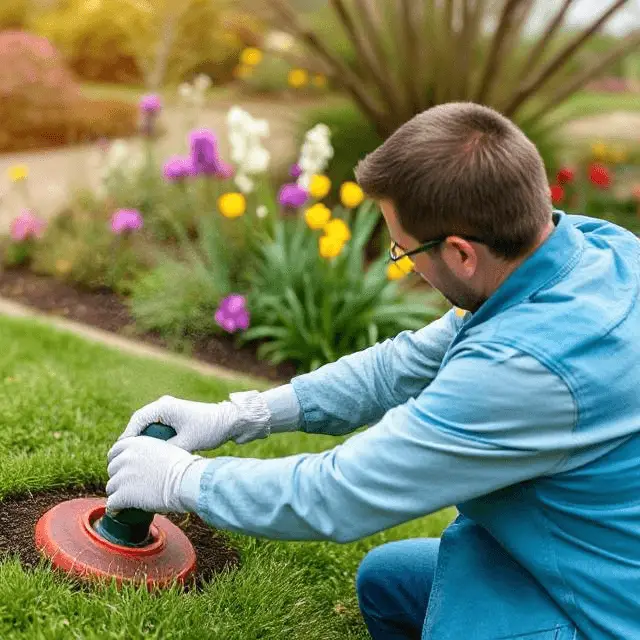How Long Should You Water Your Lawn? Experts Weigh In
Last Updated on March 26, 2025 by Duncan
A beautiful, lush lawn adds a lot of curb appeal to a house, but for this to happen, you need to water your lawn. Although an overly watered lawn can lead to issues, an under-watered grass is still a concern.
When you factor in the seasonal variations in water demands, it all becomes somehow confusing. We asked experts for their best recommendations on how long to water a lawn and how to maintain its best appearance. Here is their input:
How long it take to water the lawn in Summer
You should keep an eye out for dry spells in the summer months. Generally speaking, you should aim for two or three 30-minute watering sessions per week, with an average of ½ inch of water.
During the extended dry periods, turf grass foliage will go dormant, cease growth, and turn brown. You should note that the turf grass roots and crowns are still living even though the foliage has died.
You must water your grass regularly during the summer to keep it green and prevent it from going dormant. This usually entails watering frequently enough to supply 1 to 1 ½ inches of water per week.
How long it takes to water the lawn in Winter
Wintertime may bring a decrease in liquid moisture, depending on where you live, but your lawn is probably dormant and doesn’t need it. During winter, you should reduce supplemental irrigation as you have cooler temperatures and less growth.
Just before winter, clip the lawn height at 3 to 3 1⁄2 inches. Since winter brings colder temperatures, you can cut the grass at a lesser length—about 1 1⁄2 to 2 1⁄2 inches to guard against diseases.
How long it takes to water the lawn in spring
You should aim for one or two 30-minute watering sessions per week, using ½ to 1 inch of water. When doing it, be careful not to water the lawn too sparingly as the summer heat builds up.
Springtime requires less irrigation to keep the grass lush and healthy because there is more rain and the weather is cooler.
When watering your lawn, keep in mind that a variety of factors, such as “water pressure, hose diameter, or your sprinkler’s configuration,” might affect how much water your lawn receives in those thirty minutes.
After watering your grass for thirty minutes, you may see how much water is contained in empty tuna (or other) cans by watching them; the average is about ½ inch.
After that, modify your watering as necessary to get the ideal sweet spot. When determining how much to water, remember to account for the amount of rain that falls each week.
How long it takes to water the lawn in the Fall
Your lawn tends to hold water more easily in the fall, so it doesn’t need a lot of watering. Fall watering needs are similar to those of spring; aim for ½ to 1 inch of water per week, divided into one or two 30-minute watering sessions.
How do you know your lawn needs watering?
There are a few indicators that can let you know that your lawn needs watering. These signs include:
Pale or bluish grass: Take note of your grass’s hue and how it reacts to its surroundings. Is it bluish or a paler color? Then, water as usual.
Dry soil: Use your finger to feel the soil a few inches below the surface. Sandy, dry, or heated? Water more often.
Browning or white grass: A lawn needs water when it turns a tan color, so, if yours is browning, it’s time to water it. The most popular type of lawn grass, bluegrass, can fall dormant for a week or two at most. This is after it turns tan or light brown. This means that watering it can revive it.
The grass disappears if it turns white, so don’t let it get here.
How do you know you have overwatered your lawn?
As mentioned, the same way you can underwater your lawn, you can also overwater it. How do you know you have overwatered your lawn? Here are a few signs to look out for:
Your tracks are hidden in the grass. Walk across your lawn, wait one minute, and turn around and look for your footprints. Your turf has enough moisture in the leaves if, after a minute, you can no longer see your footprints in the grass. There’s no need to continue watering your lawn.
When you notice your imprints, resume regular watering.
The ground is damp. Place your finger up to your second knuckle in the earth. Is the dirt wet, damp, or cool? You don’t need to continue watering.
It’s green outside. Is your lawn lush and verdant? You should stop watering the lawn.
There’s a dollar weed growing on the lawn. A big indication of overwatering, especially in the Southeast, is the appearance of dollar weeds in your lawn.
Dollar weed is an aquatic plant that only grows in lakes, along shorelines, in low-lying areas, and on lawns that are overwatered.
Grass leaves are either slimy brown or becoming yellow. Chlorosis—a yellowing of the grass blades that indicates enlarged roots—can result from overwatering. In addition to this, keep an eye out for “slimy brown leaves indicating rot, wilt, or fungal disease.
How can you reduce the amount of water you put on your lawn?
If you are worried about the amount of water you put on your lawn, the good cool thing is that there are a number of strategies you can use to reduce the amount. These strategies include:
Install an irrigation system.
An irrigation system has a significant impact on the amount of water you apply to your lawn.
An irrigation system drastically reduces water wastage by distributing water only where your landscape needs it, unlike hoses and sprinklers.
Because sprinkler heads are positioned correctly, only your lawn, flowers, and bushes get watered.
When you install the system, you don’t have to worry about the sprinkler system chugging away because you forgot to turn it off because timers automatically shut it off.
The beauty of most modern irrigation systems is that they are intelligent enough to help you save money and water. The smart irrigation controllers ensure that the watering schedule is exactly correct for your environment.
Before they start irrigating, they consider the local weather forecasts and the specific circumstances of your landscape. The result of this is that water is used as sparingly as possible as your landscape grows.
Did it rain yesterday? The controller will skip the watering cycle for today, which will save you money on the amount of water you use.
Take advantage of mulch.
Mulch retains moisture in the soil, reducing the need for irrigation and saving water. While this is the case, you should note that the mulch doesn’t keep the moisture in your soil indefinitely.
Because mulch degrades with time, apply a new, resilient layer to your beds each spring.
Reduce the size of your lawn.
As much as anyone, you adore a large, lush, green carpet of grass, but the grass is somewhat thirsty. If you don’t have a lot of water, you can consider reducing the size of your lawn.
To reduce the frequency that you have to water your lawn, choose a grass variety that doesn’t require a lot of water.
Consider drip irrigation
Compared to standard sprinklers, drip irrigation uses a lot less water. It directs that valuable resource to where it is most needed—the roots of your plants.
This kind of irrigation system operates exactly as it sounds, slowly releasing water through tubing holes that are either buried or placed on top of the land.
With drip irrigation, you can truly target plants rather than covering a big area at once as you would with sprinklers.
For a great experience, ensure that your irrigation system is professionally installed.
Water your lawn at the right time
To reduce the amount of money in your account, strategically water it.
The optimum time is in the early morning when it’s still cool, and the precious water won’t evaporate in the scorching sun.
It’s not necessary to water your grass every day. Remember that overwatering promotes shallow, dependent roots. And you don’t want this, do you?
Water thoroughly but infrequently since this will encourage deeper, healthier root growth that will require less watering overall.
Lawn watering best practices
For the best outcome when watering your lawn, you need to do a number of things. These things include:
Grow the right grass.
You should always be cautious of your environment and ensure that you use the right grass for it. For example, the Midwest tends to have heavier soils, which are ideal for bluegrass and fescues.
The South (Kansas and south) and drought areas of the far West and Southwest benefit from grasses like Bermudagrass, Zoysia, and Bufalograss.
Growth temperatures in these regions are more extreme, and the soils tend to have sharper drainage, which requires more moisture.
If this is the time you are planting new grass that you know you will be irrigating in the future, do your research and find the one that is best designed for your area. This way, you have an easy time keeping it green and healthy.
Water at the right time
The ideal time to water a lawn is in the early morning, between 5 and 9 a.m. Applying water in the morning permits it to seep deeply into the soil with minimal water loss due to evaporation. The turf grass foliage also dries fast when irrigation is finished.
This ensures that there is no room for fungi and other disease-causing materials growing on wet grass.
Fertilize your lawn
For your grass to have the best chance of succeeding, you might need to think about feeding it. All grass should be given a regular diet of nutrients, primarily nitrogen.
Aim to apply 4 pounds of nitrogen per 1,000 square feet annually. But as you fertilize, understand that the watering needs of your lawn may increase while the grass responds to the feeding.


